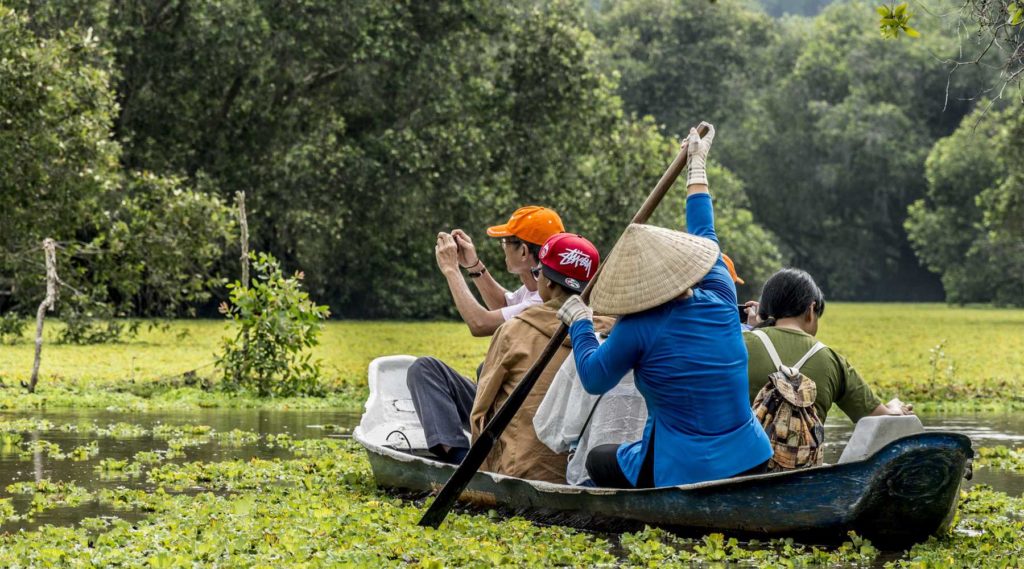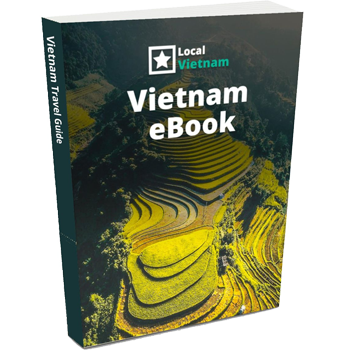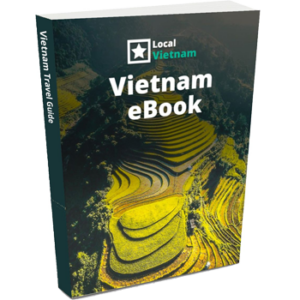What is Tra Su Cajuput Forest?
Tra Su Cajuput Forest, often called Tra Su Bird Sanctuary, is a protected wetland in the Mekong Delta. It was developed as a conservation area after decades of damage during the Vietnam War and later flooding. Today, it is known as one of An Giang Province’s most distinctive natural reserves, combining quiet waterways, dense cajuput trees, and seasonal birdlife
Location & Size
The reserve lies in Tinh Bien District, about 25–30 kilometers from Chau Doc and not far from the Cambodian border. It covers roughly 850 hectares of submerged forest and canals. While not huge compared to Vietnam’s national parks, it is one of the most accessible wetland areas in the Mekong Delta, making it a popular stop for visitors exploring An Giang.
Landscape & Nature
The main draw of Tra Su is its scenery. Canals run through carpets of bright green duckweed, surrounded by water lilies and lotuses that change with the seasons. The dominant tree here is the cajuput (melaleuca), a hardy species with white bark that thrives in waterlogged soil.
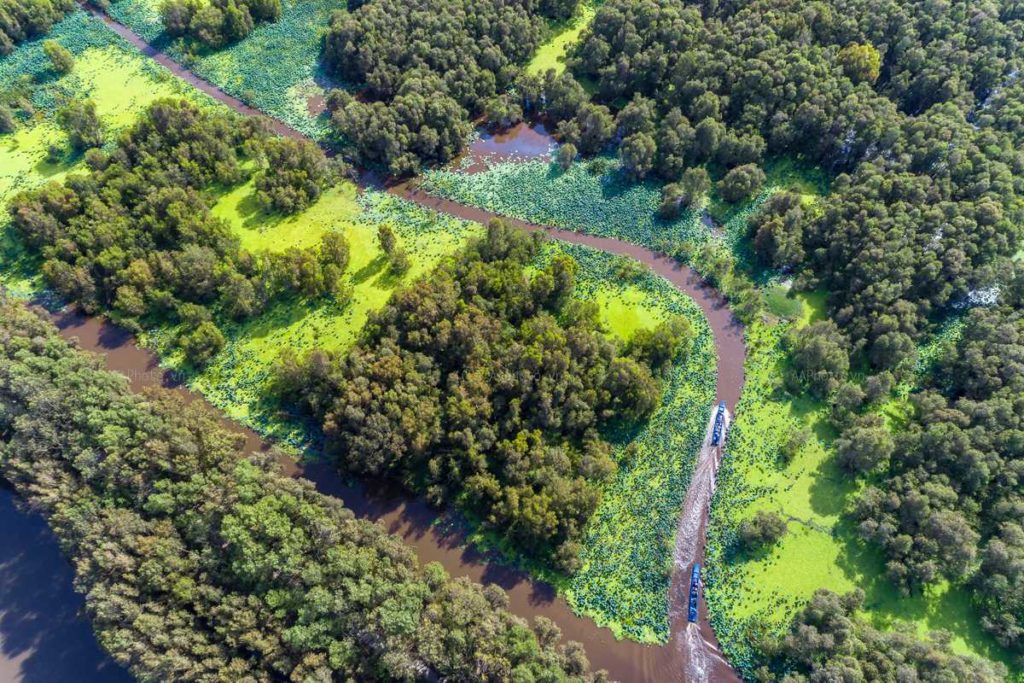
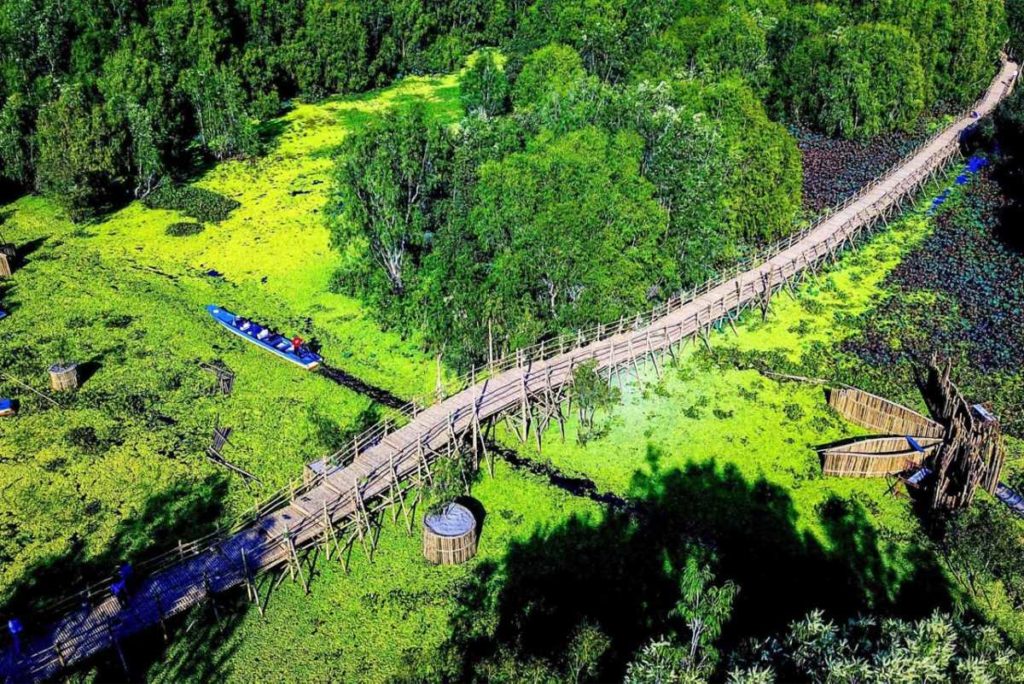
Most of the forest was replanted in the 1980s as part of a reforestation effort, after the area had been heavily damaged by bombing during the war. Over time, the forest recovered into the wetland ecosystem seen today.
Wildlife & Birdlife
Tra Su is home to around 140 plant species, more than 70 species of birds, as well as mammals, reptiles, and colonies of bats. Storks and herons are the most visible and often seen in large groups, especially during the early morning or late afternoon.
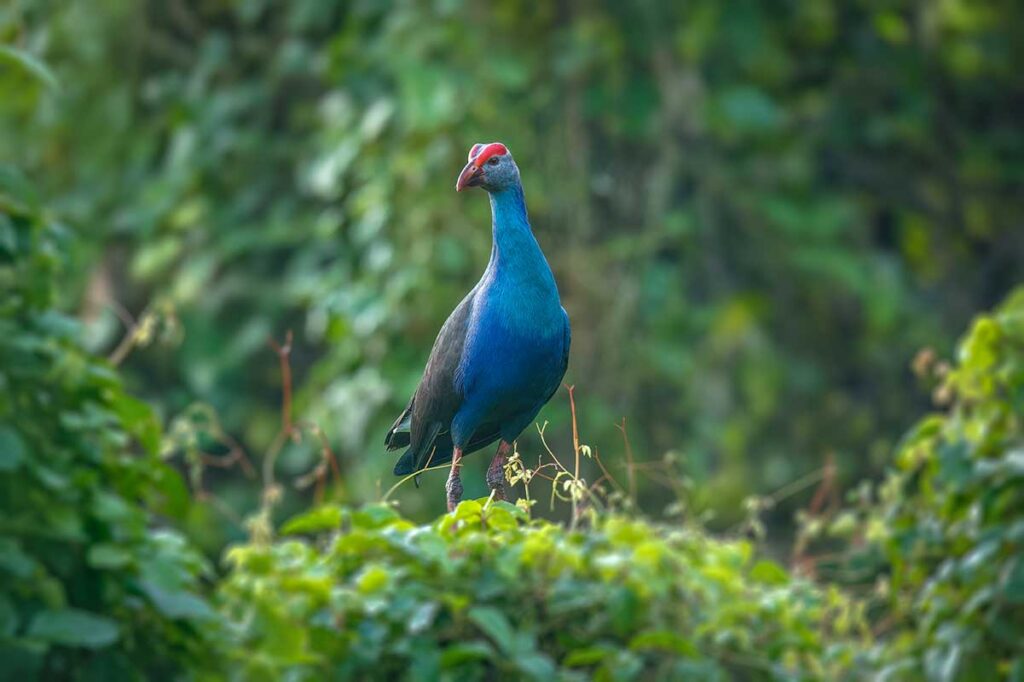
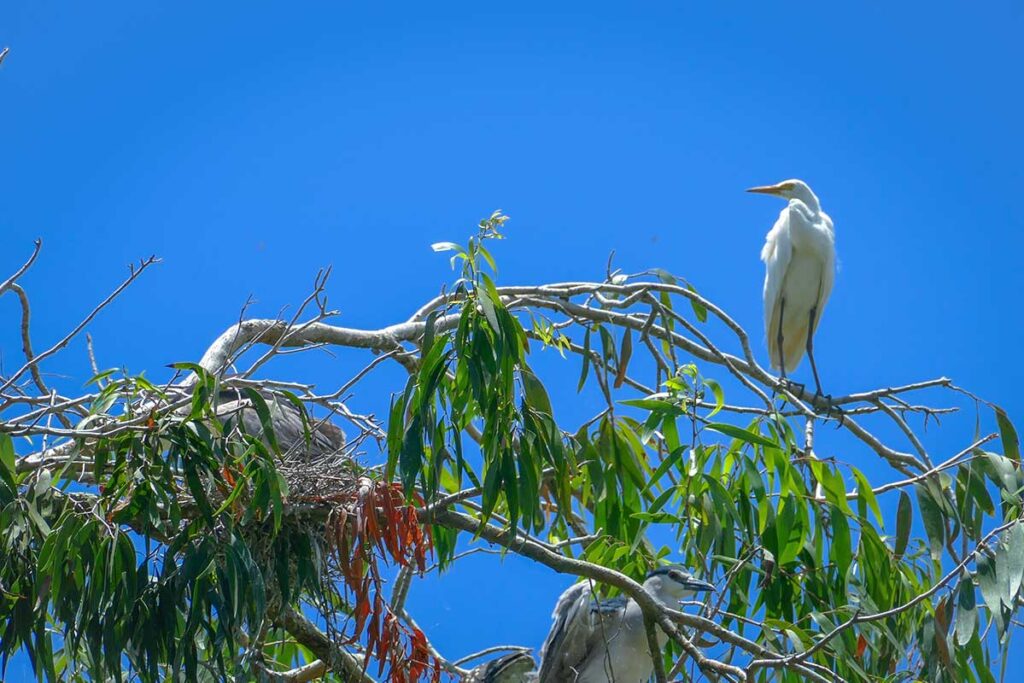
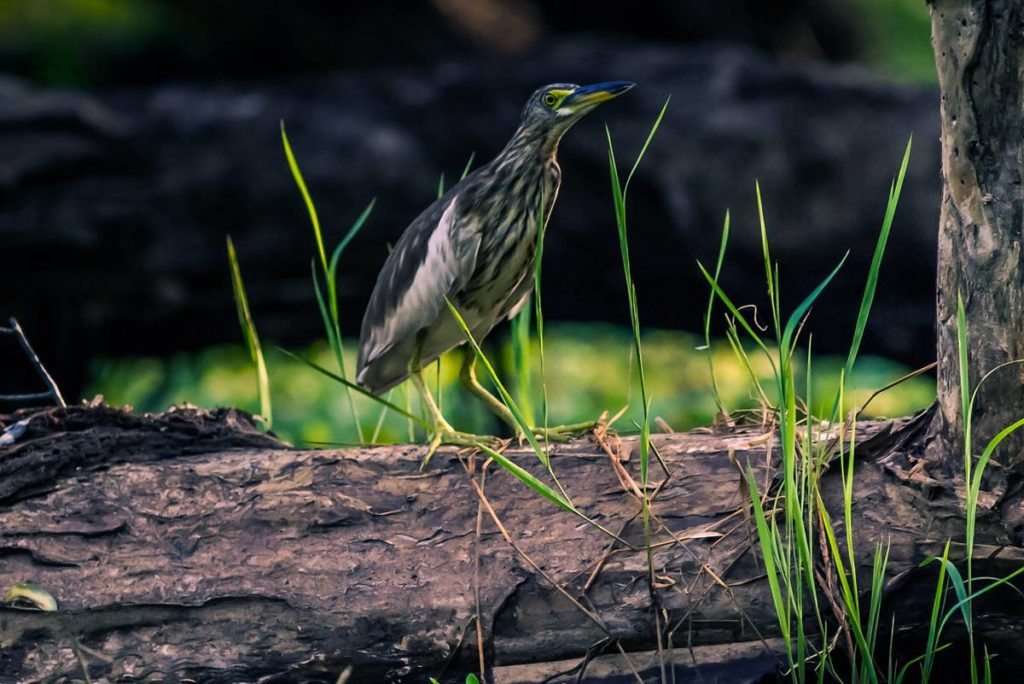
While it may not rival larger reserves like Tram Chim National Park in terms of sheer diversity, it remains one of the most reliable birdwatching spots in southern Vietnam. For travelers, the mix of accessible wildlife, flooded forest scenery, and relatively compact size makes it easy to experience in just a few hours.
Highlights of visiting Tra Su Cajuput Forest
Visiting Tra Su Cajuput Forest is less about ticking off big attractions and more about enjoying a few simple activities in a unique wetland setting. Most experiences revolve around the water, the birdlife, and the scenery.
1. Boat trips
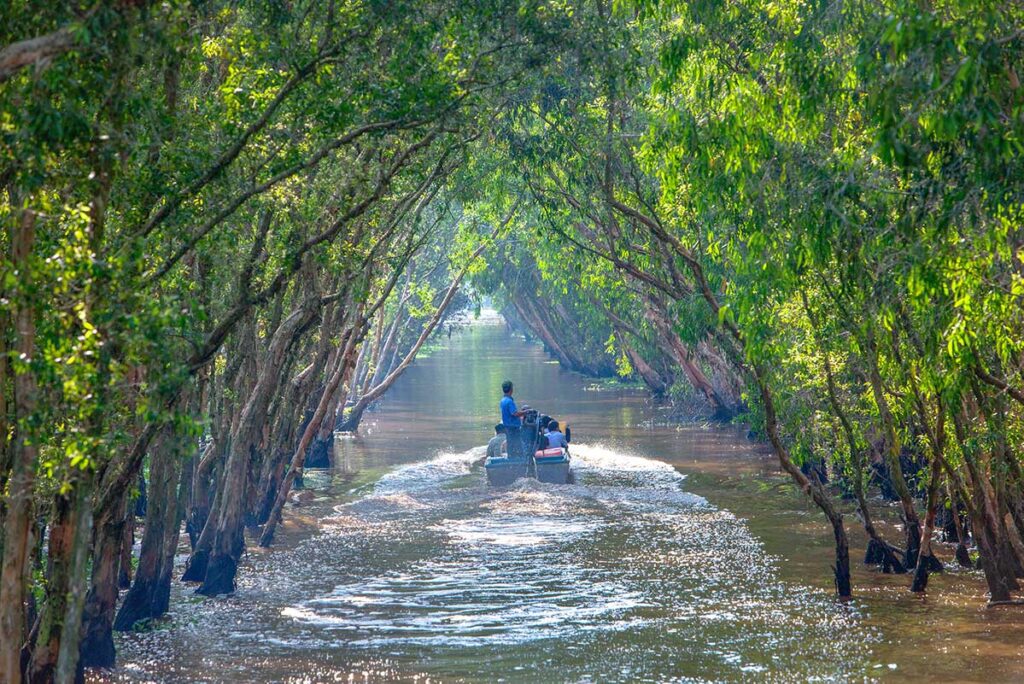
The classic way to explore Tra Su is by boat. Your visit usually starts with a motorboat that takes you along the wider canals, where carpets of duckweed cover the water like a bright green blanket. Depending on the season, you’ll also see lotuses, water lilies, and sometimes locals collecting plants.
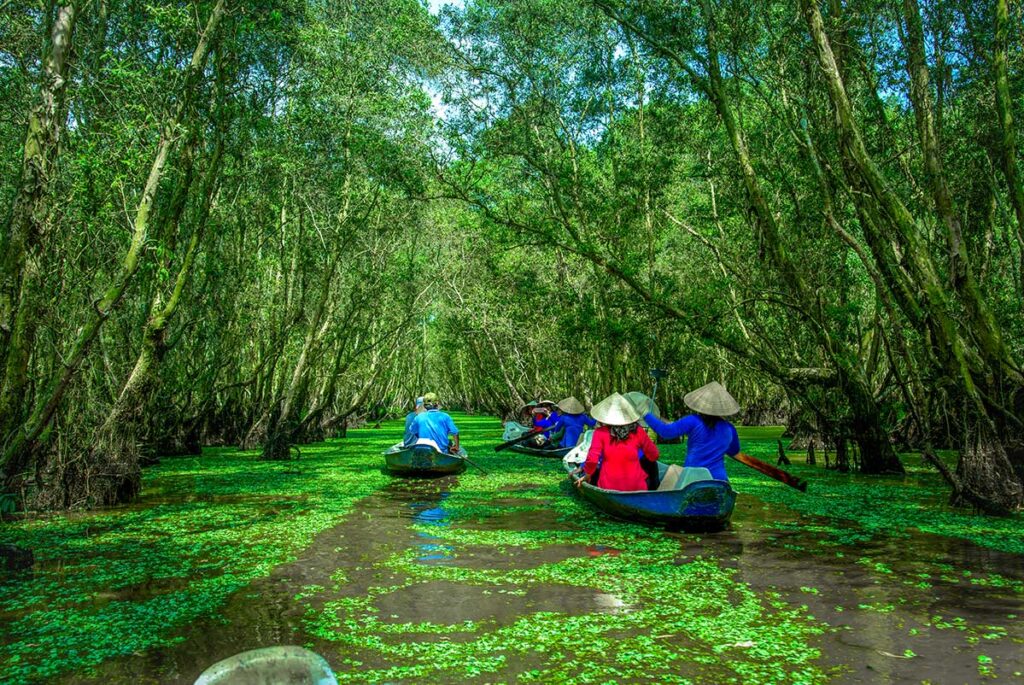
After this short ride, you switch to a smaller sampan rowed by a local guide. The paddle boat is the highlight for many — quiet, slow, and peaceful, with nothing but the sound of oars dipping into the water. It’s in these narrow channels where the forest feels most atmospheric.
2. Birdwatching
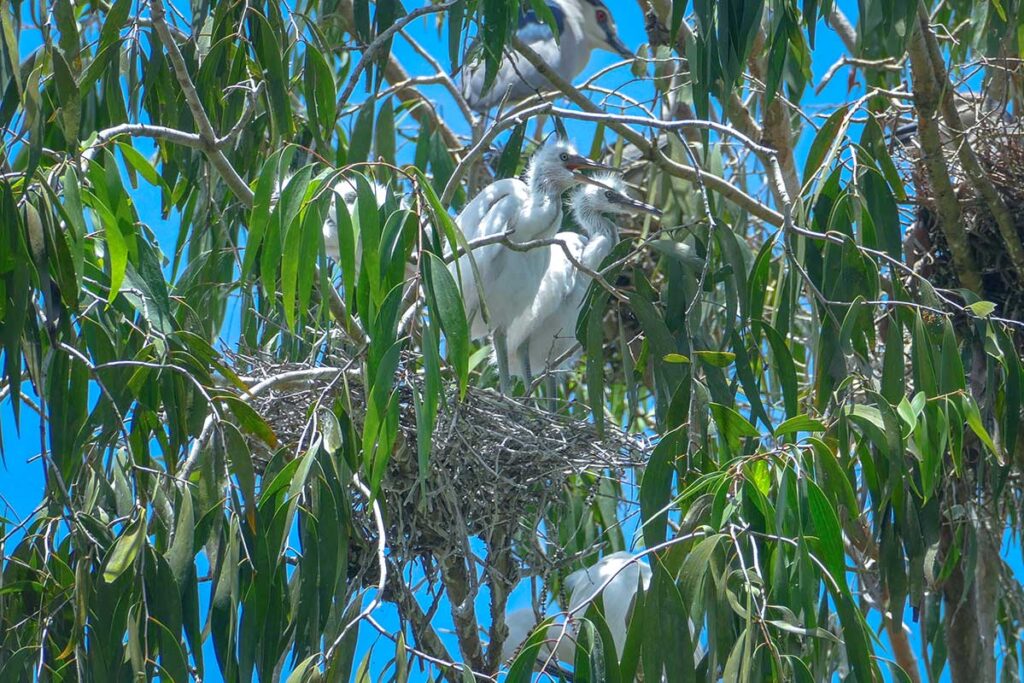
Birds are the reason Tra Su is often called a bird sanctuary. Around 70 species live here, though what you see depends on the season and time of day. Early mornings (7–9 am) and late afternoons (5–7 pm) are best, when storks and herons take off or return to their nesting grounds. For a broader view, you can climb the 23-meter observation tower, which overlooks the wetlands and makes it easier to spot flocks in the distance. Bringing binoculars is worthwhile, as birds are often perched high in the cajuput trees.
3. Bamboo walkway
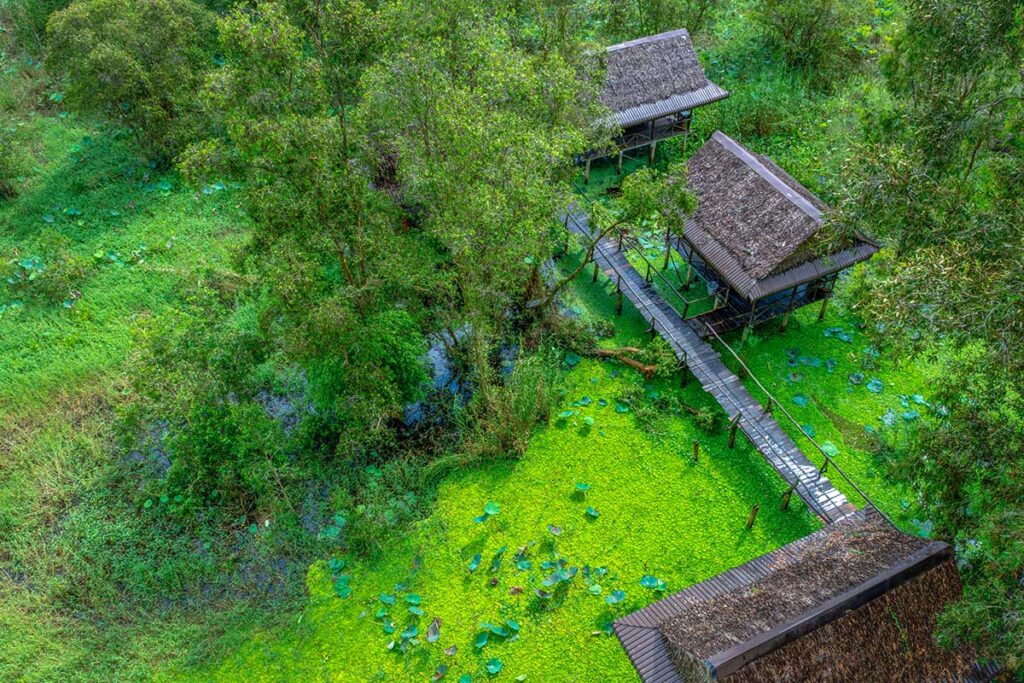
Another visitor favorite is the bamboo walkway, advertised as the longest in Vietnam. In reality, only part of it is accessible, so it may feel shorter than the signs suggest.
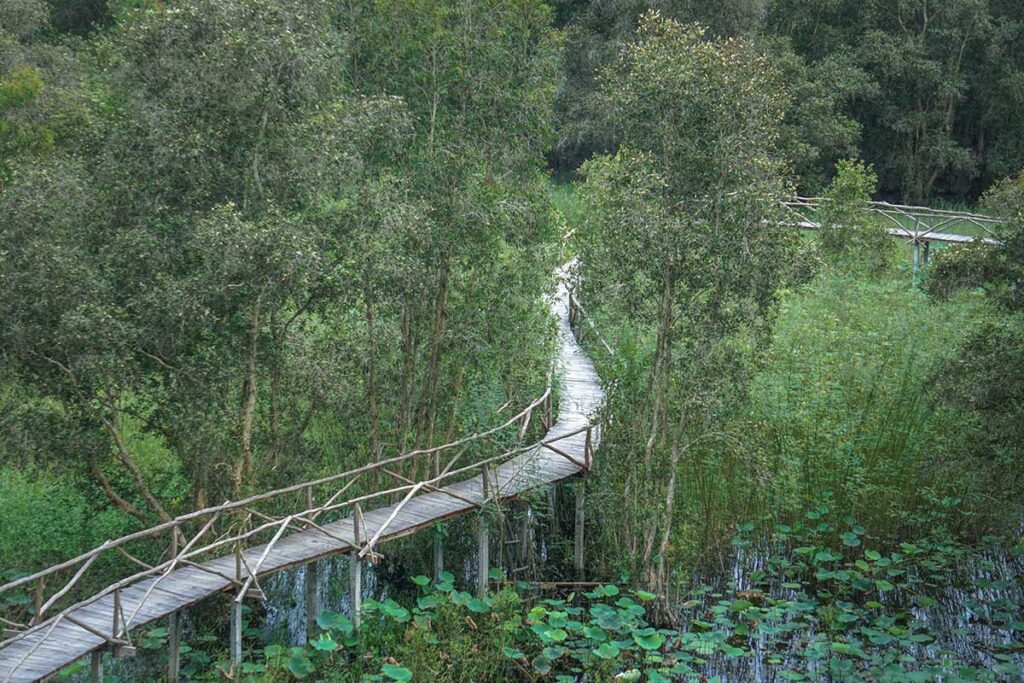
Walking it takes about 45 minutes to an hour one way. From the bridge you can look down over duckweed-covered canals, spot birds in the trees, and enjoy a different perspective than from the boats. It’s scenic but not a must-do if you’re short on time.
4. Other activities & experiences
Besides the main routes, Tra Su has added small attractions to appeal to visitors. You can rent bicycles to ride short paths around the garden area, try a bamboo swing, or sample Mekong Delta snacks at food stalls. Fishing rods and basket boats are also available for rent, though these feel more like side activities than natural highlights. Some travelers enjoy them, while others find them a bit staged.
5. Photography spots
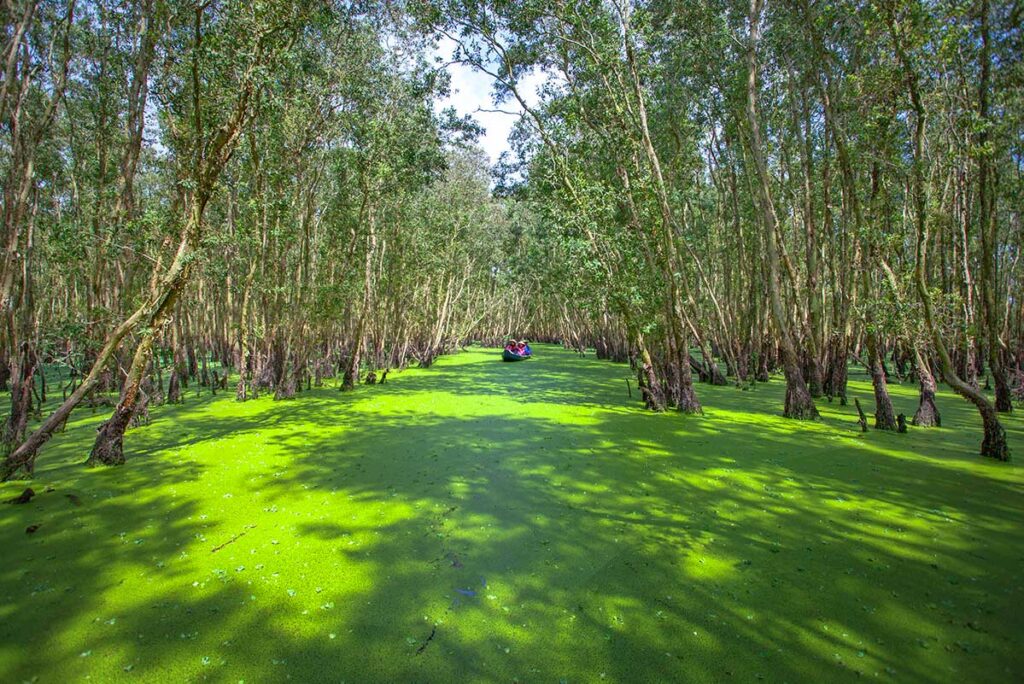
Tra Su is undeniably photogenic. The green duckweed canals framed by tall cajuput trees are the iconic shot. Other good spots include the bamboo walkway, storks circling at sunset, and the panoramic view from the observation tower. If you’re into photography, plan to spend extra time — light in the early morning or late afternoon gives the forest a more atmospheric look.
Best time to visit Tra Su
Why timing matters
When you go to Tra Su Cajuput Forest makes a big difference. Water levels rise and fall with the seasons, which changes how far boats can travel. Bird activity also follows daily rhythms, so a visit at the wrong time might feel quiet compared to the lively flocks you see at dawn or dusk.
Best season (Flooding season – September to November)
The most rewarding months are during the flooding season. From September to November, the forest is at its greenest: high water levels create wide canals, and the duckweed spreads into thick emerald carpets. This is when Tra Su looks most photogenic, and boat rides feel more immersive because you can glide deeper into the flooded forest. Bird numbers also tend to be higher, making it the peak period for both scenery and wildlife.
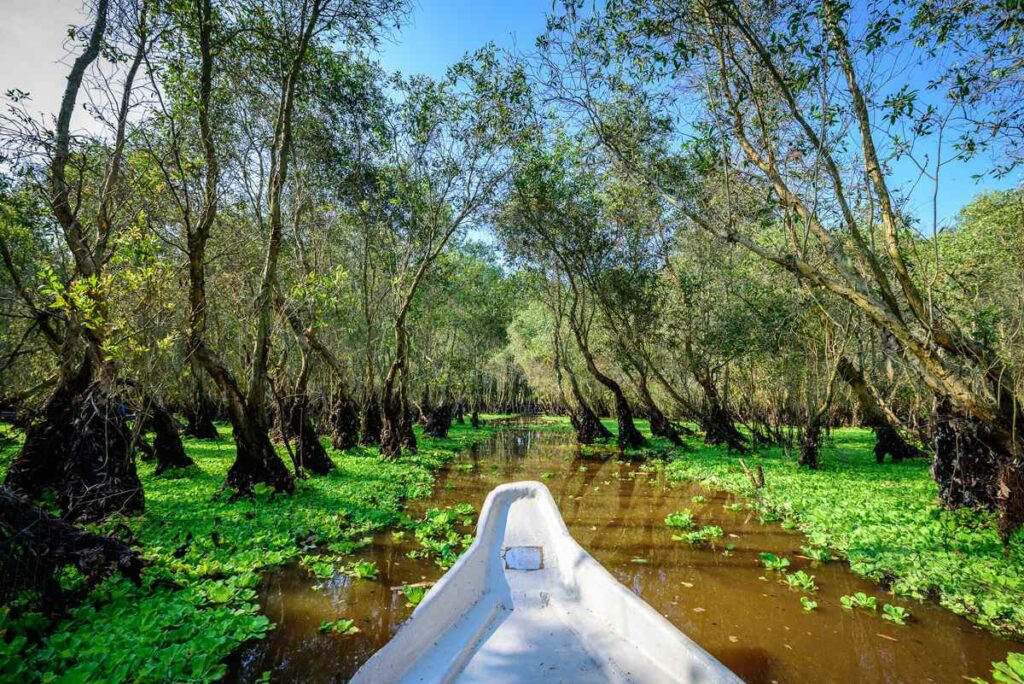
Other seasons
- Dry season (December to May): The forest doesn’t disappear, but canals shrink and the duckweed doesn’t cover the surface as fully. On the upside, walking or cycling is easier because paths are less muddy, and the weather is generally clear.
- Rainy season (June to August): Expect mixed conditions. Showers can be heavy and may shorten a boat trip, but the forest is lush and green. If you don’t mind getting wet, it’s still a pleasant time to experience the wetland atmosphere.
Best time of day
Birds are most active in the cooler hours. In the early morning (7–9 am), storks and herons take off in large groups, while in the late afternoon (5–7 pm) they return to their nests — both are striking sights. Midday visits are possible, but the forest tends to feel quieter and hotter, with fewer birds around. If photography is your goal, plan for the softer light of morning or evening.
How to get to Tra Su
Chau Doc as a base
The easiest way to reach Tra Su is from Chau Doc, a riverside town about 25–30 km away (roughly 35 minutes by car). Chau Doc is well worth a stay, with floating villages, lively local markets, and Cham Muslim villages with stilt houses and mosques. Using Chau Doc as your base also makes it easy to combine Tra Su with other An Giang highlights like Sam Mountain or a boat ride on the Bassac River.
From other towns
If you’re not staying in Chau Doc, you can still reach Tra Su on a day trip:
- From Long Xuyen: About 1.5–2 hours by car or motorbike. Long Xuyen is a larger, more local city and has an authentic floating market in the mornings.
- From Ho Chi Minh City: Buses run daily to Chau Doc, taking around 6–8 hours depending on the company. From there, you’ll need to arrange a car or motorbike to Tra Su. It’s too far for a same-day return, so most travelers spend at least one night in Chau Doc.
Transport options
From Chau Doc (35 minutes) or Long Xuyen (1.5–2 hours), you have several ways to reach Tra Su depending on your budget and travel style:
- Private car with driver: The most convenient choice, especially if you want the driver to wait and combine multiple stops. Prices are usually agreed in advance and give more flexibility than a taxi.
- Taxi: Possible from Chau Doc, though you’ll need to arrange for the driver to wait during your visit.
- Motorbike rental: An affordable and popular option in Chau Doc (typically 150,000–200,000 VND per day). Roads are quiet by Vietnamese standards, but you should only attempt this if you have proper experience and a valid license.
- Motorbike driver (xe ôm): A good choice if you don’t ride yourself — essentially a private transfer on the back of someone else’s bike.
- Cycling: At about 25 km from Chau Doc, it’s technically possible, but on basic rental bicycles it can be a long and tiring ride. A guided cycling tour with better bikes is more realistic for those who want an active day out.
Practical visitor information & Tips
Opening Hours & Tickets
Tra Su Cajuput Forest is generally open from around 6:30 am to 6:00 pm. Tickets are sold at the entrance and usually include the basic package of entrance fee plus boat rides:
- Entrance ticket: about 100,000 VND
- Motorboat ride: about 50,000 VND
- Sampan (rowed boat): about 50,000 VND
Expect to pay roughly 200,000 VND per person for the full standard experience. Children under a certain height (about 1.3 m) often enter for free.
Optional extras include:
- Bicycle rental (50,000–80,000 VND)
- Fishing rods or basket boat rides (from 35,000–70,000 VND)
- Bamboo swing and small activities (10,000–20,000 VND)
Prices vary slightly depending on the operator, and you’ll sometimes see bundled “tour” tickets that include several services.
Facilities
The park entrance is set up to handle groups, with parking, a ticket office, Wi-Fi, and small shops selling snacks and souvenirs. Toilets and shaded resting areas are available, though basic. Restaurants can be found both inside the forest and along the access road. Food is convenient but often overpriced and average in quality, so many visitors prefer to eat back in Chau Doc or bring small snacks and drinks with them.
What to Bring
- Cash only — no card payment options.
- Mosquito repellent is highly recommended, especially in the wet season.
- Sunscreen, hat, and water for hot days.
- Binoculars if you are serious about birdwatching.
- Raincoat or poncho during rainy months, as showers can come quickly.
Duration of visit
A basic visit with the boat rides, bamboo walkway, and observation tower takes 2–3 hours. If you add cycling, stop for a meal, or try some of the smaller activities, it can stretch into half a day. Most travelers find half a day plenty before moving on to other sights in An Giang.
Nearby sights to combine with Tra Su
Because Tra Su Cajuput Forest is fairly remote, it’s best to plan your visit together with other places in An Giang Province:
- Sam Mountain – A sacred hill near Chau Doc dotted with temples and shrines. From the top you get sweeping views over rice fields and even across the Cambodian border on a clear day.
- Ta Pa Rice Fields – A patchwork of rice terraces surrounding Ta Pa Pagoda. This area is especially photogenic during the planting and harvest seasons, when the colors of the fields are at their most vibrant.
- Chau Doc – A lively riverside town known for its floating fish farms, Cham villages with wooden stilt houses and mosques, and a bustling central market that shows the mix of cultures in the region.
- Long Xuyen – The province’s biggest city, best known for its floating market on the Hau River, where traders gather at dawn to exchange fruit, vegetables, and other produce from their boats.
For a broader overview of what to see in the area, check our full An Giang travel guide.
Is Tra Su Cajuput Forest worth visiting?
Tra Su Cajuput Forest is worth visiting if you’re already exploring An Giang or staying in Chau Doc. It’s a peaceful place for birdwatching, photography, and simply enjoying the quiet of a flooded forest — the green duckweed canals are unlike anywhere else in the Mekong Delta.
That said, expectations matter. This isn’t a place of dramatic wildlife encounters or big animals; outside the peak flooding season, bird numbers can feel modest and some canals may look less striking. If you’re traveling all the way from Ho Chi Minh City just for Tra Su, it can feel underwhelming. But as part of a wider An Giang trip that includes Sam Mountain, Chau Doc, or Ta Pa rice fields, it’s a very worthwhile stop.
